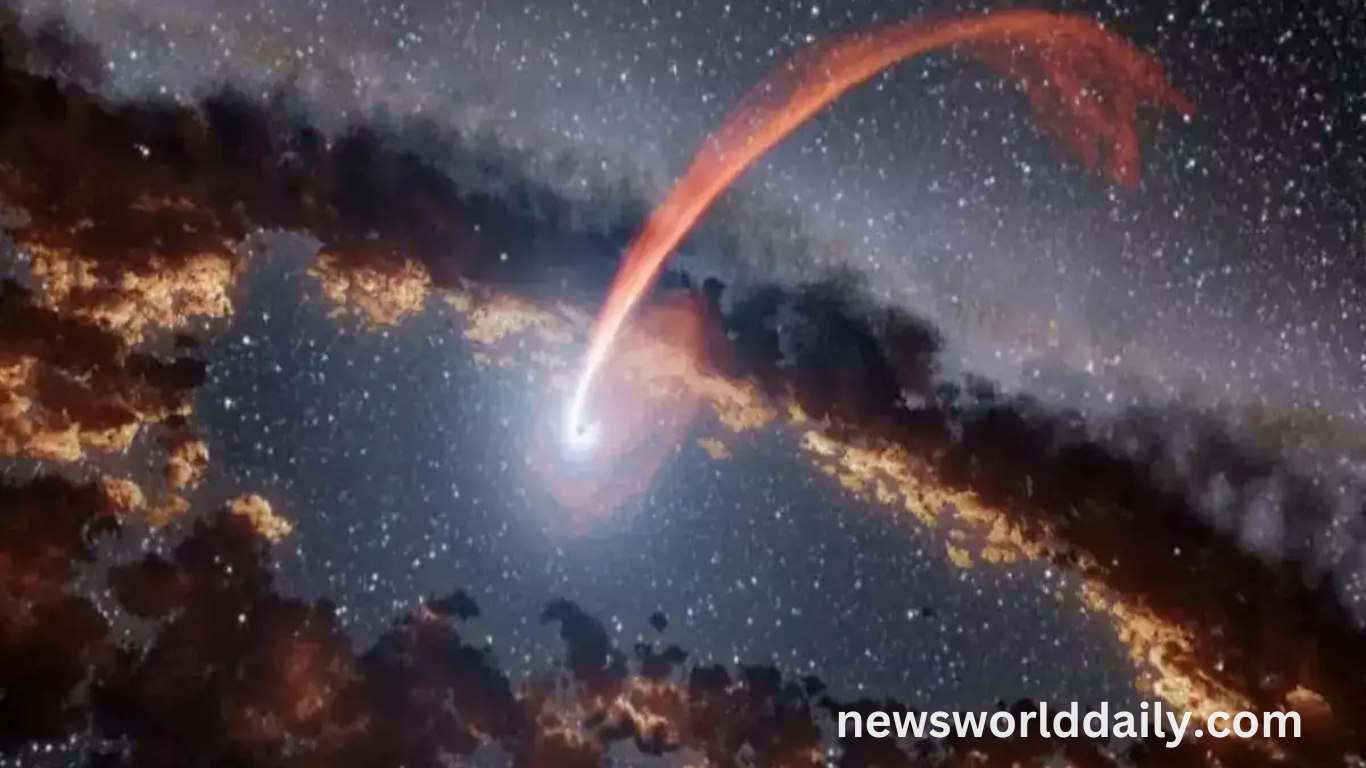In a remarkable and somewhat unsettling revelation, scientists have identified a supermassive black hole on a trajectory toward the Milky Way galaxy. While black holes are often elusive, their immense gravitational pull can drastically influence the surrounding space, shaping entire galaxies. The presence of such a colossal object near our galaxy raises profound questions about the future of our cosmic neighborhood.
Supermassive Black Hole
Supermassive black holes, which reside at the centers of most large galaxies, possess a mass millions to billions of times that of our Sun. These enigmatic objects exert gravitational forces so strong that even light cannot escape their pull. Typically, they grow by absorbing gas, dust, and even stars. Their influence extends far beyond their immediate surroundings, affecting the dynamics of entire galaxies.
Uncovering the Path of the Rogue Black Hole
Astronomers have observed the motion of this particular supermassive black hole using advanced telescopic technology. Its movement suggests that it is heading directly toward the center of the Milky Way. This discovery is crucial because it provides new insights into the dynamics of black holes and their impact on galactic evolution. The black hole is not traveling at a speed that will result in an immediate collision, but its trajectory is worth monitoring.
Implications for the Milky Way Galaxy
If this black hole does indeed move closer to the heart of the Milky Way, it could significantly alter the gravitational landscape of our galaxy. The intense gravitational forces exerted by the black hole could disrupt the orbit of stars, gas clouds, and other celestial bodies, potentially triggering cosmic events like star formation or supernovae.
Read More : Dinosaurs Laid Eggs, So Do We Classify Them All As Reptiles?
Moreover, the collision between the black hole and the existing supermassive black hole at the Milky Way’s center could lead to a catastrophic merger. Such an event would produce an enormous release of energy, potentially resulting in the formation of a new black hole of even greater size and power.
Understanding the Potential Outcomes
Though the likelihood of a direct collision remains remote, the potential effects of a close encounter are substantial. A merger between two supermassive black holes would release an immense amount of energy in the form of gravitational waves, rippling through space-time itself. These waves could be detectable by current observatories, offering valuable data about the behavior of black holes and the fundamental nature of the universe.
Even if the black hole does not directly collide with the Milky Way’s core, its passage could lead to significant changes in the galaxy’s structure, affecting the orbits of stars and potentially triggering a series of events that could reshape the galaxy over millions of years.
Monitoring and Future Research
Astronomers are keenly monitoring the situation, utilizing both optical and radio telescopes to track the black hole’s movement. As it draws nearer, the data gathered will provide critical insights into the mechanics of black holes, their influence on galaxies, and the behavior of these mysterious cosmic entities.
Frequently Asked Questions
What is a supermassive black hole?
A supermassive black hole is a cosmic object with a mass millions to billions of times that of the Sun. It exerts an incredibly strong gravitational pull, preventing even light from escaping.
How far is the rogue black hole from the Milky Way?
The rogue black hole is still quite distant from the Milky Way, but its trajectory suggests it could eventually impact the galaxy.
What would happen if the black hole collides with the Milky Way?
If the rogue black hole merges with the supermassive black hole at the center of the Milky Way, it could result in a massive release of energy and potentially reshape the galaxy’s structure.
How do scientists track black holes?
Scientists use advanced telescopes that observe light and gravitational waves emitted by black holes, allowing them to track their movement and study their properties.
What are gravitational waves?
Gravitational waves are ripples in space-time created by massive cosmic events, such as black hole mergers. They are detectable by sensitive instruments like LIGO and Virgo.
Can a black hole destroy the Milky Way?
No, the Milky Way is far too large for a black hole to destroy. However, its gravitational effects could significantly alter the galaxy’s structure over millions of years.
Will the black hole reach the center of the Milky Way?
It is unclear whether the rogue black hole will collide with the Milky Way’s center, but it is currently moving toward it.
How do supermassive black holes grow?
Supermassive black holes grow by accumulating surrounding matter, such as gas, dust, and even stars, over time.
Conclusion
The approaching supermassive black hole offers an unprecedented opportunity to study the complexities of black holes and their role in shaping galaxies. While the potential risks are significant, it provides valuable insights into the vast and dynamic forces that govern the cosmos, reminding us of the ever-changing nature of our universe.









